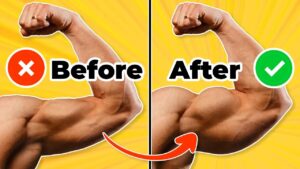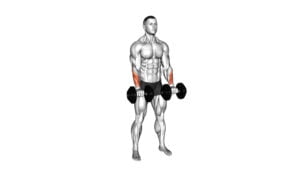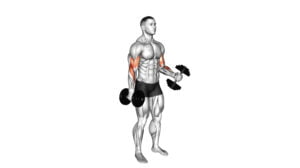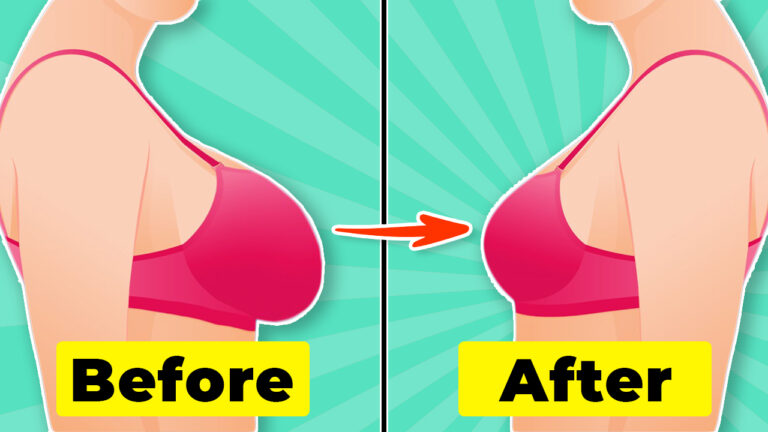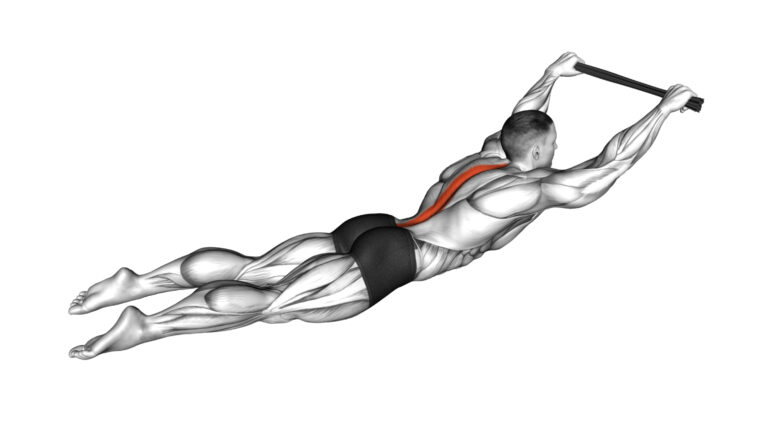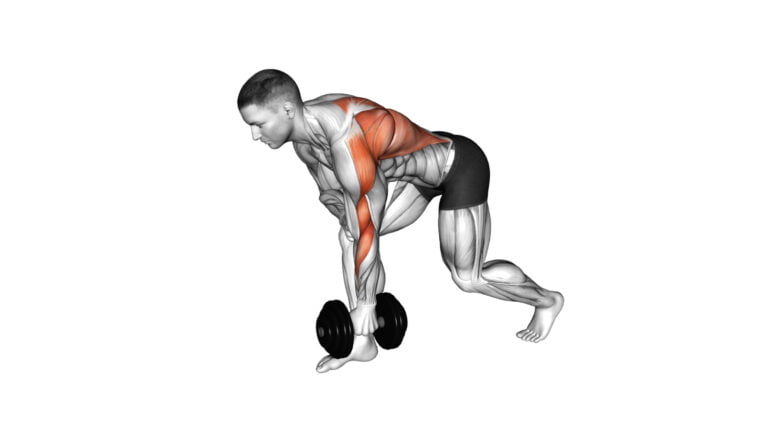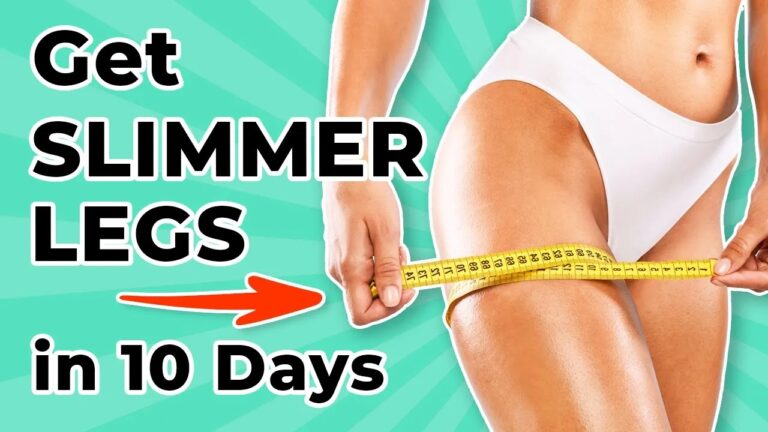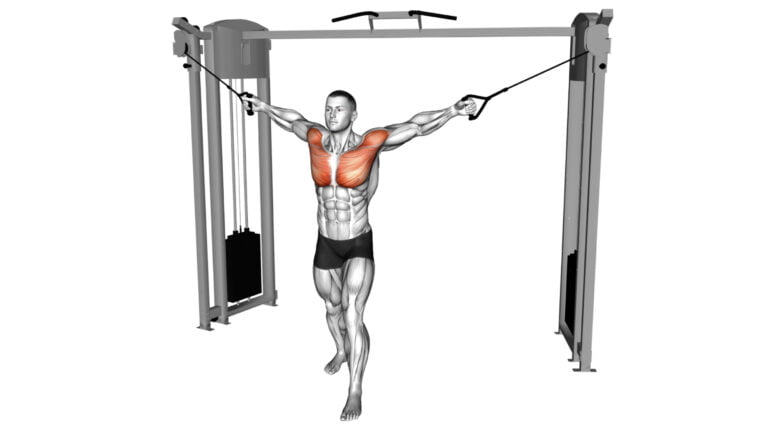Get Superhero-Like Arms with This Insane Dumbbell Forearms Workout!

Do you struggle with weak forearms that limit your grip and arm strength? Well, we have just the solution for you! Incorporating a forearms dumbbell workout into your fitness routine can help you build bigger and stronger forearms while improving your overall performance. By targeting the specific muscles in your forearms, these exercises will not only enhance your grip strength but also add definition to this often overlooked area. Get ready to say goodbye to noodle arms and hello to Popeye-worthy forearms with our top 10 dumbbell exercises!
Key Takeaways
- Forearm dumbbell exercises can help strengthen your grip and improve overall arm strength.
- These exercises target the muscles in your forearms, which are important for activities like gripping objects and performing precision tasks.
- Incorporating forearm dumbbell exercises into your workout routine can lead to increased vascularity and muscle definition in your forearms.
- Adding variety to your forearm workouts with different exercises can help you achieve bigger and stronger forearms.
Importance of exercising forearms
Strengthening your forearms through dumbbell exercises is key for enhancing overall upper body strength and boosting athletic performance. You rely on forearm muscles when gripping objects, climbing, or performing any activity that involves wrist control.
Moreover, well-defined forearms add aesthetic appeal to your arms and can make a difference in the appearance of your physique. Concentrating on forearm workouts not only benefits arm wrestlers or rock climbers; everyday tasks like opening jars or carrying groceries become easier too with stronger forearms.
Through various types of dumbbell exercises tailored for the forearms, you can target these often overlooked muscles and enjoy improved functionality along with a firm handshake!
Benefits of forearm workouts
Strengthening your forearms leads to a variety of benefits that extend beyond the visible muscular development. A strong grip contributes directly to overall strength, and is essential for numerous daily tasks like carrying groceries and opening jars.
Working out your forearms increases wrist stability, reducing the risk of various sports-related injuries. Dumbbell workouts specifically can promote symmetry in muscle development, as they allow each arm to handle an individual weight load.
These exercises also improve hand endurance which plays a crucial role in sports such as climbing, wrestling or anything else that requires prolonged gripping. Finally, they add aesthetic appeal by providing increased vascularity and muscle definition for impressive “Popeye arms.”.
Anatomy and Function of Forearm Muscles
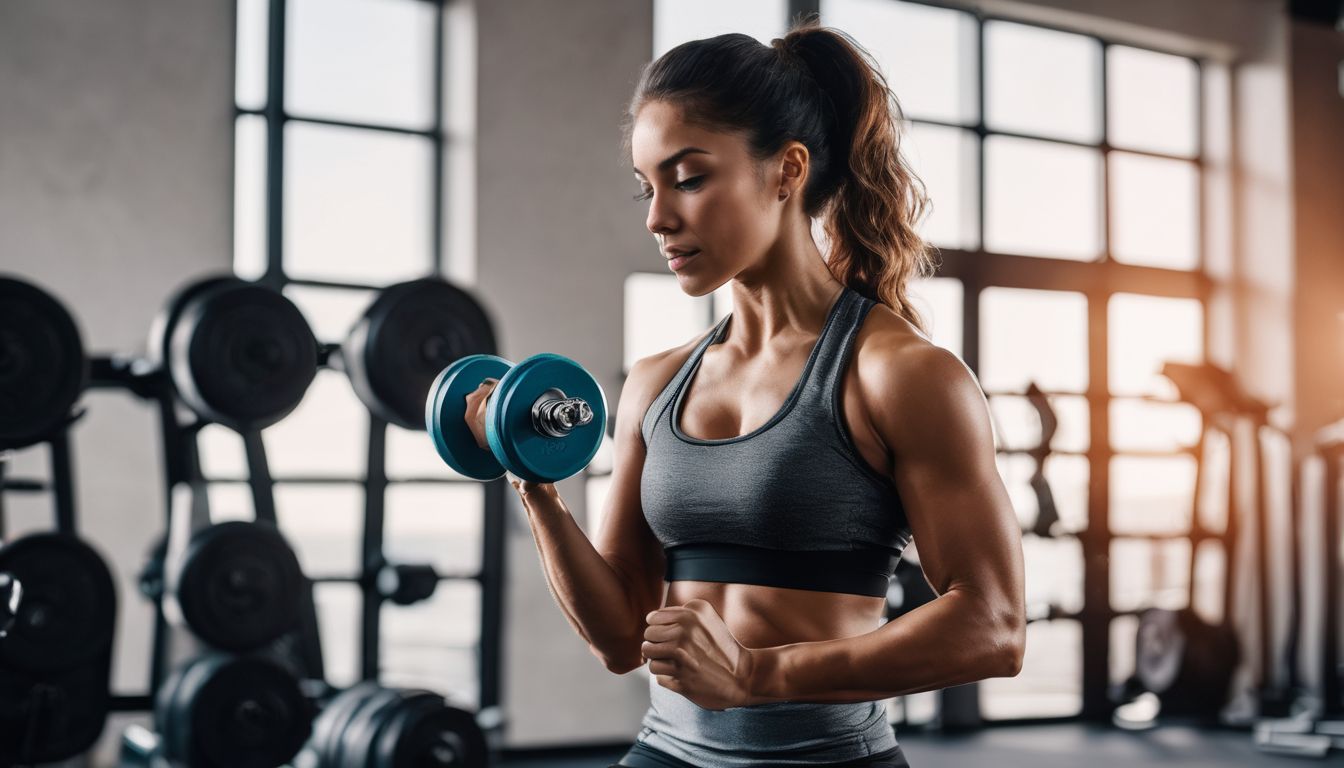
The forearm, a key player in our daily routines, houses two main muscle groups: the flexors and extensors. The flexor group, on the palm side of your forearm, allows you to close your hand into a fist.
In contrast, the extensor group located on the back of your forearm controls opening your hand.
In addition to these actions, both groups contribute significantly to grip strength—a necessity for activities such as lifting weights or carrying grocery bags. Moreover, strong forearm muscles help stabilize wrist motions for precision tasks like writing or painting.
Forearm muscles link directly with those in your hands and upper arms; therefore, they play an essential role in many dumbbell exercises. These muscles also respond well to increased resistance during workouts—becoming more defined and contributing toward achieving “Popeye arms.” Enhanced vascularity from working out can increase blood flow throughout these muscle groups too!
Dedicated forearms dumbbell exercises are vital if you’re looking at building bigger forearms not only for physical appeal but also functional fitness! From doing intense moves like Farmer’s Walk to simpler ones such as Palms-Up Wrist Curl or Grip Crush—the right approach would lead towards noticeable results!
Top 10 Forearm Dumbbell Exercises
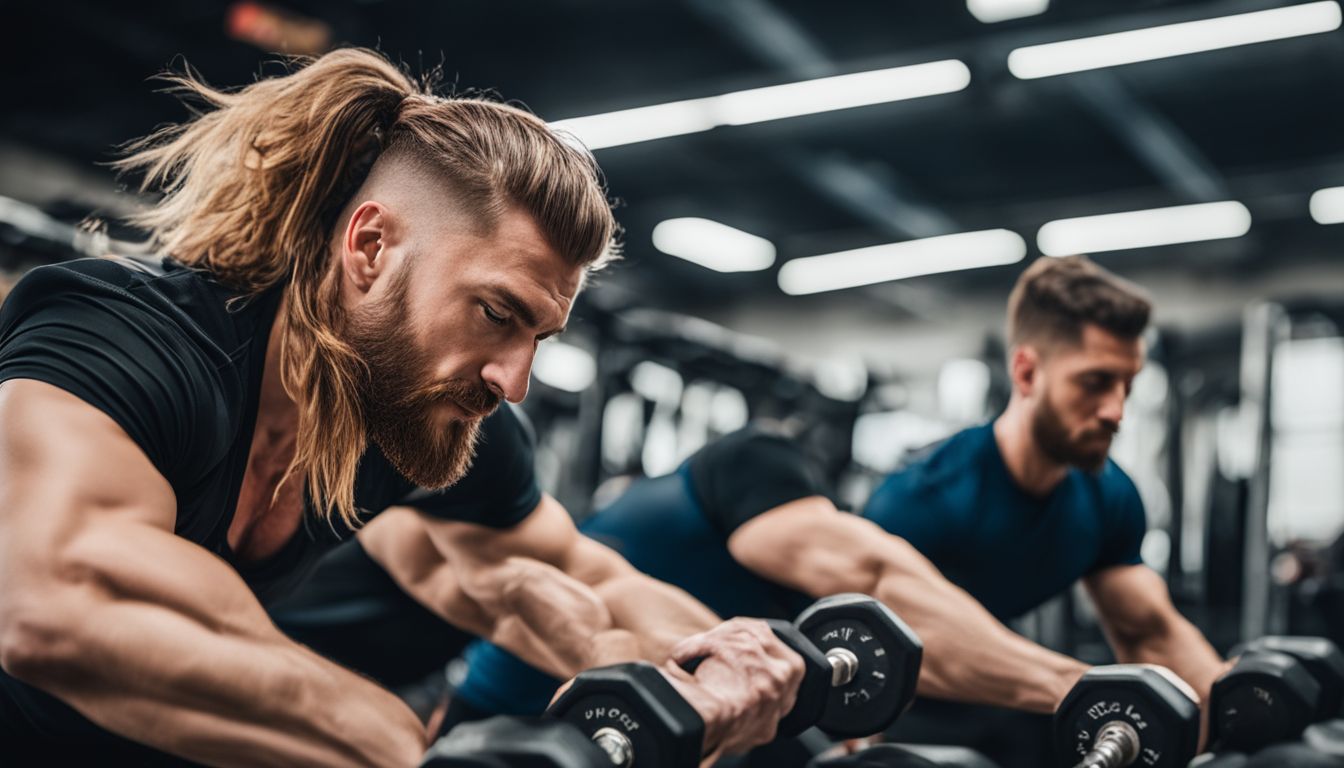 forearm dumbbell exercises in a gym, captured with high-quality photography equipment.” title=”A person performing forearm dumbbell exercises in a gym, captured with high-quality photography equipment.” class=”awimage” />
forearm dumbbell exercises in a gym, captured with high-quality photography equipment.” title=”A person performing forearm dumbbell exercises in a gym, captured with high-quality photography equipment.” class=”awimage” />
Here are the top 10 forearm dumbbell exercises that you can incorporate into your workout routine for stronger and more defined forearms.
Standing Wrist Curl
The Standing Wrist Curl is a highly effective exercise for strengthening your forearms and enhancing wrist flexibility. All you need to perform this simple workout is a set of dumbbells.
Begin by holding the weights down at your sides, palms facing forward. Slowly curl your wrists up, keeping the rest of your arm stationary. Lower them back down after a short pause at the top of each repetition.
This movement helps isolate the forearm muscles and can result in stronger grips as well as increased vascularity over time. One great advantage to this routine is that it’s easy to do both at home or in the gym! Incorporate this into your regular workouts for improved overall arm strength and power.
Behind Back Finger Curl
The Behind Back Finger Curl is an effective forearm exercise that targets the muscles in the back of your forearms. To do this exercise, stand with your feet shoulder-width apart and hold a dumbbell in each hand behind your back, palms facing backward.
Slowly curl your fingers up towards your wrists, squeezing your forearm muscles at the top of the movement. Then, lower the weights back down and repeat for the desired number of reps.
This exercise helps to strengthen and build mass in your forearms, improving grip strength and overall upper body functionality.
Seated Neutral Wrist Curl
The seated neutral wrist curl is an effective exercise for targeting the muscles in your forearms. To perform this exercise, sit on a bench with your feet flat on the floor and hold a dumbbell in each hand.
Rest your forearms on your thighs, palms facing each other, and let the dumbbells hang down. Then, slowly curl the dumbbells upwards by moving only your wrists. Pause at the top of the movement before lowering them back down to starting position.
This exercise helps strengthen and build muscle in your forearms, improving grip strength and overall forearm development.
Adding seated neutral wrist curls to your forearm workout routine can provide great benefits such as increased strength and mass in this muscle group. It’s important to maintain proper form throughout the exercise; avoid using momentum or excessively swinging the weights.
Reverse Wrist Curl
The Reverse Wrist Curl is a highly effective dumbbell exercise for building strong forearms. To perform this exercise, sit on a bench with your feet flat on the floor and hold a dumbbell in each hand, palms facing down.
Rest your forearms on your thighs with your wrists hanging off the edge. Slowly curl the dumbbells upward by bending your wrists, making sure to keep your arms and elbows stationary throughout the movement.
Pause at the top of the movement before slowly lowering the dumbbells back down to starting position. This exercise targets the muscles on the top side of your forearms, helping to increase overall forearm strength and size.
Over Bench Wrist Curl
To work your forearms effectively, try the Over Bench Wrist Curl exercise. This exercise targets the muscles in your wrists and forearms, helping to build strength and increase muscle mass.
To perform this exercise, sit on one side of a bench with a dumbbell in one hand. Rest your forearm on the bench with your palm facing downwards. Slowly curl your wrist upwards towards you, then lower it back down to the starting position.
Repeat this movement for the desired number of reps before switching to the other hand. By incorporating over bench wrist curls into your workout routine, you can develop strong and defined forearms that will enhance both your grip strength and overall upper body strength.
Over Bench Reverse Wrist Curl
Performing the Over Bench Reverse Wrist Curl is an effective way to target and strengthen your forearms using dumbbells. To do this exercise, sit on one end of a bench with your feet firmly planted on the ground.
Hold a dumbbell in each hand with an overhand grip and rest your forearms on top of the bench, palms facing down. Lower the dumbbells towards the floor by bending your wrists, then slowly raise them back up as high as you can by extending your wrists.
Repeat for the recommended number of reps to give those forearm muscles a good workout.
One Arm Wrist Curl
To target the muscles in one forearm at a time, try the One Arm Wrist Curl using a dumbbell. Sit on a bench and rest your arm on your thigh, palm facing up. Hold onto a dumbbell with an underhand grip and let it hang down towards the floor.
Now, slowly curl your wrist upward as far as you can go while keeping your elbow still. Pause for a moment at the top before lowering the weight back down to starting position. This exercise effectively works your forearm muscles, helping to build strength and size.
One Arm Seated Neutral Wrist Curl
To strengthen and build your forearms, try the one-arm seated neutral wrist curl exercise. Sit on a bench with a dumbbell in one hand, palm facing inward. Rest your forearm on your thigh and allow the dumbbell to hang down.
Slowly curl your wrist upward as far as possible, then lower it back down. Repeat for the desired number of reps before switching arms. This exercise targets the muscles on the top side of your forearm, helping you develop a balanced and powerful grip.
Give it a try for more defined and stronger forearms!
One Arm Reverse Wrist Curl
To target your forearm muscles and build strength, try the one arm reverse wrist curl. This exercise is done with a dumbbell and helps to strengthen the extensor muscles in your forearms.
Start by holding a dumbbell in one hand, palm facing down. Rest your forearm on a bench or the edge of a chair while keeping your wrist hanging off. Slowly lower the weight towards the ground by curling your wrist up, then return to starting position.
Repeat for desired reps before switching arms. The one arm reverse wrist curl is an effective exercise that can help you achieve stronger and more defined forearms.
Seated Reverse Grip Concentration Curl
To target your forearms and build strength, try the Seated Reverse Grip Concentration Curl. Sit on a bench with your feet flat on the floor. Hold a dumbbell in one hand with an underhand grip.
Rest your elbow on the inside of your thigh, letting your arm hang down toward the floor. Slowly curl the weight up towards your shoulder while keeping your upper arm stationary. Pause for a moment at the top, squeezing your forearm muscles, before lowering it back down slowly to starting position.
This exercise places maximum tension directly on the forearms, helping you develop impressive forearm size and definition.
Forearms dumbbell workout Video
Watch this video to learn how to effectively work out your forearms using dumbbells:
How to Perform These Exercises
To properly perform these forearm dumbbell exercises, it is important to maintain proper form and technique. Start by selecting a weight that challenges your forearms without compromising your form.
Then, follow the instructions below for each exercise to ensure maximum effectiveness:.
– Standing Wrist Curl: Hold a dumbbell in each hand with an underhand grip and let them hang at arm’s length in front of you. Slowly curl the weights towards your forearms by flexing your wrists, then lower them back down.
– Behind Back Finger Curl: Stand with your feet shoulder-width apart and hold a dumbbell in each hand behind your thighs with an overhand grip. Flex your fingers to curl the weights up towards the base of your palms, then slowly release them back down.
– Seated Neutral Wrist Curl: Sit on a bench or chair with a dumbbell in each hand resting on top of your thighs. Using a neutral grip (palms facing up), curl the weights towards your forearms by flexing.
Proper form and technique
To ensure the effectiveness and safety of your forearm dumbbell exercises, it is important to maintain proper form and technique. Start by gripping the dumbbell firmly, keeping your wrist straight and aligned with your forearm.
Keep your back straight, engage your core muscles, and avoid using excessive momentum during the exercise.
For standing wrist curls, lower the dumbbells as far as possible while maintaining control. Curl them upward towards you without moving your forearms or elbows. Slowly return to the starting position.
When doing reverse wrist curls, hold the dumbbells with an overhand grip instead of an underhand grip like in traditional bicep exercises. Lower the weight slowly as far down as possible before curling them back up towards you.
During one-arm variations such as one arm wrist curls or seated neutral wrist curls, make sure to focus on each arm individually to achieve balanced development.
Recommended sets and reps
To get the most out of your forearm dumbbell workout, it’s important to use the right sets and reps. Aim for 3-4 sets of each exercise with a rep range between 8-12. This will help build both strength and size in your forearms.
Start with a weight that challenges you but allows you to maintain proper form throughout each set. As you progress, gradually increase the weight to continue challenging your muscles.
By following these recommended sets and reps, you’ll be well on your way to achieving stronger and more defined forearms!
Other variations (using machines)
Using machines is another way to vary your forearm workouts and target different areas of the forearms. The machine wrist curl is a great exercise that isolates the forearm muscles and allows you to adjust the weight for progressive overload.
By sitting on a bench with your forearms resting on padded levers, you can perform wrist curls by flexing your wrists up and down, working both the flexors and extensors of the forearms.
Another machine variation is the seated reverse grip concentration curl. This exercise specifically targets the brachioradialis muscle in your forearms. To perform this exercise, sit on a bench with your legs spread apart and rest one elbow against your inner thigh.
Using an underhand grip, hold onto a dumbbell or cable attachment and curl it up towards your shoulder while keeping your upper arm stationary.
Supplementing for Forearm Strength and Mass
In addition to regular workouts, supplementing can help in enhancing forearm strength and mass.
Benefits of supplementing for forearms
Supplementing for forearms can offer several benefits. By incorporating the right supplements into your routine, you can enhance muscle growth and strength in your forearms. These supplements can provide the necessary nutrients that may be lacking from your diet alone, promoting optimal recovery and reducing muscle soreness after intense forearm workouts.
Additionally, certain supplements can improve blood circulation to the forearm muscles, increasing vascularity and giving them a more defined appearance. If you’re looking to take your forearm gains to the next level, consider adding targeted supplements to support your training efforts.
Recommended supplements
To maximize your forearm strength and mass, you may consider incorporating these recommended supplements into your routine:
- Fish oil: Rich in omega-3 fatty acids, fish oil can help reduce inflammation and promote healthy blood flow to the forearms.
- Creatine: This popular supplement has been shown to increase muscle strength and power. Taking creatine can support your forearm workouts by providing energy for intense exercises.
- Branched-chain amino acids (BCAAs): BCAAs are essential for muscle growth and recovery. They can help prevent muscle breakdown during intense forearm workouts and promote faster healing.
- Nitric oxide boosters: These supplements enhance blood flow by dilating blood vessels, leading to improved nutrient delivery to the forearms. Increased vascularity can result in better muscle pumps and overall gains.
- Protein powder: Consuming an adequate amount of protein is crucial for muscle growth and repair. Adding a protein powder to your diet can ensure that you have enough protein to support the development of your forearms.
Conclusion
Incorporating dumbbell exercises into your forearm workouts can help you achieve bigger and stronger forearms. With a variety of exercises targeting different muscles in the forearms, you can improve both grip strength and overall arm definition.
Whether at the gym or at home, using dumbbells for forearm training is an effective way to increase vascularity and achieve those coveted “Popeye arms.” Start incorporating these exercises into your routine today for impressive forearm gains.
FAQs
1. What are forearms dumbbell workouts?
Forearms dumbbell workouts are specific exercise routines that target your forearm muscles using dumbbells.
2. Can I get bigger forearms with dumbbell workouts?
Yes, by consistently performing targeted forearms dumbbell workouts, you can develop and strengthen your forearms leading to bigger muscles over time.
3. Are there different types of exercises in a forearm dumbbell workout?
Absolutely! There’s a variety of exercises that make up a comprehensive forearms dumbbell workout designed for muscle growth and endurance.
4. How often should I do these workouts to have bigger forearms?
It’s recommended to include the specific forearms dumbbell routines in your workout schedule two to three times per week for optimal development and gains.
Sources referenced in this article
- https://www.setforset.com/blogs/news/forearm-workout-dumbbell
- https://steelsupplements.com/blogs/steel-blog/10-best-forearm-dumbbell-workouts-for-strength-and-mass
- https://www.healthline.com/health/forearm-exercises
- https://www.muscleandfitness.com/workouts/arm-exercises/30-minute-dumbbell-workout-build-your-forearms/
- https://www.medicalnewstoday.com/articles/forearm-exercises
- https://www.fitfatherproject.com/dumbbell-forearm-exercises/
- https://www.ativafit.com/blogs/exercise-tips/best-forearm-workouts-with-dumbbells-at-home

Author
Years ago, the spark of my life’s passion ignited in my mind the moment I stepped into the local gym for the first time. The inaugural bead of perspiration, the initial endeavor, the very first surge of endorphins, and a sense of pride that washed over me post-workout marked the beginning of my deep-seated interest in strength sports, fitness, and sports nutrition. This very curiosity blossomed rapidly into a profound fascination, propelling me to earn a Master’s degree in Physical Education from the Academy of Physical Education in Krakow, followed by a Sports Manager diploma from the Jagiellonian University. My journey of growth led me to gain more specialized qualifications, such as being a certified personal trainer with a focus on sports dietetics, a lifeguard, and an instructor for wellness and corrective gymnastics. Theoretical knowledge paired seamlessly with practical experience, reinforcing my belief that the transformation of individuals under my guidance was also a reflection of my personal growth. This belief holds true even today. Each day, I strive to push the boundaries and explore new realms. These realms gently elevate me to greater heights. The unique combination of passion for my field and the continuous quest for growth fuels my drive to break new ground.





